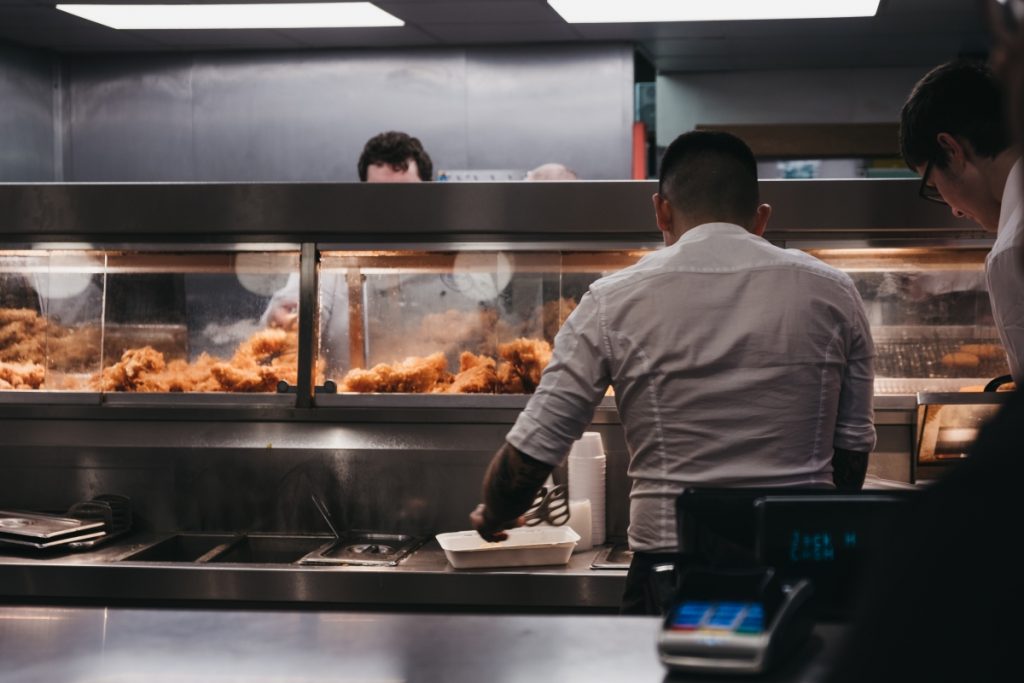Restaurant Cyber Insurance: Protecting POS Systems & Customer Data
In today's digital dining landscape, restaurants face unprecedented cyber risks that can devastate both operations and reputation. From compromised POS systems to stolen customer data, the threats are real and growing. This comprehensive guide explores how restaurant cyber insurance can protect your business from the financial and operational consequences of cyber attacks.
The Growing Cyber Threat Landscape for Restaurants
The restaurant industry has become an increasingly attractive target for cybercriminals. With the widespread adoption of digital payment systems, online ordering platforms, and customer loyalty programs, restaurants now handle vast amounts of sensitive data daily. This digital transformation, while beneficial for business operations, has created new vulnerabilities that malicious actors are eager to exploit.
Recent statistics paint a concerning picture: the restaurant industry experiences cyber attacks at a rate 300% higher than other sectors. The combination of high transaction volumes, multiple payment processing points, and often limited cybersecurity budgets makes restaurants particularly vulnerable to data breaches and cyber incidents.
The consequences of a cyber attack extend far beyond immediate financial losses. Restaurants face potential lawsuits from affected customers, regulatory fines, business interruption costs, and long-term reputation damage that can take years to recover from. This is where comprehensive cyber insurance becomes not just beneficial, but essential for modern restaurant operations.
Understanding POS System Vulnerabilities
Point-of-Sale (POS) systems are the heart of restaurant operations, processing thousands of transactions daily. However, these systems also represent one of the most significant cyber security risks facing the industry. Understanding these vulnerabilities is crucial for restaurant owners looking to protect their businesses.
Common POS System Threats
Malware Infections: Sophisticated malware can infiltrate POS systems through various vectors, including infected USB drives, compromised software updates, or phishing emails. Once installed, this malware can capture credit card data, customer information, and transaction details in real-time.
Network Intrusions: Weak network security can allow cybercriminals to gain unauthorized access to POS systems remotely. This is particularly concerning for restaurants with multiple locations or those using cloud-based POS solutions without proper security measures.
Insider Threats: Employees with access to POS systems can pose significant risks, whether through malicious intent or inadvertent security breaches. This includes everything from intentional data theft to accidentally installing malicious software.
Physical Security Breaches: POS terminals left unattended or inadequately secured can be physically compromised through device skimming, tampering, or theft of hardware containing sensitive data.
The Cost of POS System Breaches
When POS systems are compromised, the financial impact can be devastating. Beyond the immediate costs of investigating and containing the breach, restaurants face payment card industry (PCI) compliance fines, forensic investigation expenses, and potential lawsuits from affected customers. The average cost of a data breach in the restaurant industry now exceeds £150,000, with larger establishments facing costs in the millions.
Customer Data Protection Challenges
Modern restaurants collect and store vast amounts of customer data, from basic contact information for reservations to detailed payment card data and dining preferences. This wealth of information makes restaurants attractive targets for cybercriminals and creates significant compliance obligations under data protection regulations.
Types of Customer Data at Risk
Payment Card Information: Credit and debit card numbers, expiration dates, and CVV codes represent the most valuable targets for cybercriminals. This information can be quickly monetized on dark web marketplaces.
Personal Identification Data: Names, addresses, phone numbers, and email addresses collected through loyalty programs, online ordering systems, and reservation platforms can be used for identity theft and fraud.
Dining Preferences and Habits: While seemingly less sensitive, data about customer dining preferences, frequency of visits, and spending patterns can be valuable for targeted fraud schemes and social engineering attacks.
Employee Information: Staff personal data, including Social Security numbers, bank account details for payroll, and employment records, represent another significant data protection challenge.
Regulatory Compliance Requirements
Restaurants must navigate complex regulatory requirements including GDPR for customer data protection, PCI DSS for payment card security, and various industry-specific regulations. Non-compliance can result in substantial fines and legal consequences, making comprehensive cyber insurance coverage essential for managing these risks.
What Restaurant Cyber Insurance Covers
Restaurant cyber insurance provides comprehensive protection against the financial and operational consequences of cyber incidents. Understanding what's covered helps restaurant owners make informed decisions about their insurance needs.
First-Party Coverage
Data Breach Response: Covers the immediate costs of responding to a data breach, including forensic investigations, legal consultations, and notification expenses. This includes the cost of hiring cybersecurity experts to contain the breach and assess the extent of the damage.
Business Interruption: Provides compensation for lost revenue when cyber incidents disrupt normal business operations. This is particularly important for restaurants where even short-term system outages can result in significant revenue losses during peak dining periods.
Data Recovery and Restoration: Covers the costs of recovering lost or corrupted data, including customer databases, financial records, and operational systems. This includes both technical recovery efforts and the cost of recreating lost information.
Cyber Extortion: Protects against ransomware attacks and other forms of cyber extortion, covering both ransom payments (where legally permissible) and the costs of negotiating with cybercriminals.
Third-Party Coverage
Privacy Liability: Covers legal costs and damages when restaurants are sued by customers whose personal information was compromised in a data breach. This includes both individual lawsuits and class-action suits.
Regulatory Fines and Penalties: Provides coverage for fines imposed by regulatory bodies for non-compliance with data protection laws, PCI DSS requirements, and other relevant regulations.
Network Security Liability: Covers claims arising from unauthorized access to the restaurant's computer systems, including situations where the restaurant's compromised systems are used to attack third parties.
Payment Card Industry (PCI) Fines: Specifically covers fines and assessments imposed by payment card companies following a data breach involving cardholder data.
Industry-Specific Cyber Risks
The restaurant industry faces unique cyber risks that differ from other sectors. These industry-specific challenges require specialized insurance coverage and risk management approaches.
Online Ordering and Delivery Platforms
The explosive growth of online ordering and third-party delivery services has created new cyber risk exposures. Restaurants now integrate with multiple platforms, each with its own security standards and vulnerabilities. A breach in any connected system can potentially compromise the restaurant's entire network.
Mobile ordering apps, in particular, present unique challenges as they often store customer payment information and personal data across multiple devices and platforms. Ensuring security across this expanded digital ecosystem requires comprehensive cyber insurance coverage.
Loyalty Programs and Customer Databases
Restaurant loyalty programs collect detailed customer information, creating valuable databases that are attractive targets for cybercriminals. These systems often integrate with POS systems, creating additional pathways for potential breaches.
The challenge is compounded by the fact that loyalty program data is often stored for extended periods, increasing the potential impact of any security breach. Cyber insurance must account for the long-term nature of these data retention practices.
Multi-Location Challenges
Restaurant chains and franchises face unique cyber security challenges due to their distributed nature. Each location represents a potential entry point for cybercriminals, and inconsistent security practices across locations can create vulnerabilities.
Cyber insurance for multi-location restaurants must address the complex risk profile created by multiple systems, varying security standards, and the potential for a single breach to affect multiple locations simultaneously.
Risk Assessment and Prevention Strategies
While cyber insurance provides crucial financial protection, implementing robust risk prevention strategies is equally important. A comprehensive approach combines insurance coverage with proactive security measures to minimize the likelihood and impact of cyber incidents.
Conducting Cyber Risk Assessments
Regular cyber risk assessments help restaurants identify vulnerabilities and prioritize security investments. These assessments should evaluate all digital systems, from POS terminals to online ordering platforms, and assess the potential impact of various cyber threats.
Professional risk assessments can also help restaurants understand their insurance needs and ensure adequate coverage levels. Many cyber insurance providers offer risk assessment services as part of their coverage packages.
Employee Training and Awareness
Human error remains one of the leading causes of cyber incidents in restaurants. Comprehensive employee training programs should cover password security, phishing recognition, and proper handling of customer data.
Regular training updates and simulated phishing exercises help maintain high levels of security awareness among staff. Many cyber insurance policies offer premium discounts for restaurants that implement comprehensive employee training programs.
Technology Security Measures
Implementing robust technical security measures is essential for protecting restaurant systems. This includes regular software updates, network segmentation, encryption of sensitive data, and comprehensive backup systems.
Working with qualified IT security professionals to implement and maintain these measures can significantly reduce cyber risk exposure and may result in more favorable insurance terms.
Choosing the Right Cyber Insurance Coverage
Selecting appropriate cyber insurance coverage requires careful consideration of the restaurant's specific risk profile, operational characteristics, and financial situation. Not all cyber insurance policies are created equal, and restaurant owners must understand the nuances of different coverage options.
Coverage Limits and Deductibles
Determining appropriate coverage limits requires analysis of potential loss scenarios, including worst-case breach situations. Restaurants should consider factors such as the number of customer records they maintain, annual revenue, and the potential cost of business interruption.
Deductible levels should be balanced against the restaurant's financial capacity and risk tolerance. Higher deductibles can reduce premium costs but may create financial strain in the event of a claim.
Policy Exclusions and Limitations
Understanding policy exclusions is crucial for avoiding coverage gaps. Common exclusions may include certain types of cyber attacks, pre-existing security vulnerabilities, or incidents involving employee dishonesty.
Restaurants should work with experienced insurance brokers to understand these limitations and explore additional coverage options where necessary.
Claims Process and Support Services
The quality of claims handling and support services can be as important as the coverage itself. Look for insurers that offer 24/7 breach response services, access to cybersecurity experts, and streamlined claims processes.
Many insurers also provide risk management resources, including security assessments, employee training materials, and incident response planning assistance.
Cost Considerations and ROI
While cyber insurance represents an additional business expense, the return on investment becomes clear when considering the potential costs of uninsured cyber incidents. Understanding the factors that influence premium costs helps restaurants make informed coverage decisions.
Factors Affecting Premium Costs
Several factors influence cyber insurance premiums for restaurants, including the size of the operation, types of data handled, existing security measures, and claims history. Restaurants with robust security programs and comprehensive employee training typically qualify for lower premiums.
The integration of third-party systems, such as online ordering platforms and payment processors, can also impact premium costs due to the expanded risk exposure they create.
Cost-Benefit Analysis
When evaluating cyber insurance costs, restaurants should consider the potential financial impact of various cyber incidents. The average cost of a data breach in the restaurant industry continues to rise, making insurance coverage increasingly cost-effective.
Beyond direct financial protection, cyber insurance provides access to specialized expertise and resources that most restaurants cannot afford to maintain in-house, adding significant value to the coverage.
Implementation and Best Practices
Successfully implementing cyber insurance coverage requires more than simply purchasing a policy. Restaurants must integrate insurance considerations into their overall risk management strategy and maintain ongoing compliance with policy requirements.
Incident Response Planning
Developing a comprehensive incident response plan is essential for minimizing the impact of cyber incidents and ensuring insurance coverage responds effectively. This plan should include immediate response procedures, communication protocols, and coordination with insurance providers.
Regular testing and updating of incident response plans helps ensure they remain effective as the restaurant's operations and technology environment evolve.
Ongoing Risk Management
Cyber insurance should be viewed as part of a comprehensive risk management strategy rather than a standalone solution. Regular security assessments, employee training updates, and technology improvements all contribute to reducing overall cyber risk exposure.
Maintaining open communication with insurance providers about changes in operations, technology, or risk exposure helps ensure continued adequate coverage.
Future Trends and Considerations
The cyber insurance landscape for restaurants continues to evolve as new technologies emerge and cyber threats become more sophisticated. Understanding future trends helps restaurants prepare for emerging risks and coverage needs.
Emerging Technologies
New technologies such as artificial intelligence, Internet of Things (IoT) devices, and advanced analytics are creating new opportunities and risks for restaurants. These technologies may require specialized insurance coverage and risk management approaches.
The continued growth of contactless payment systems and mobile ordering platforms will likely drive demand for more comprehensive cyber insurance coverage tailored to these technologies.
Regulatory Evolution
Data protection regulations continue to evolve, with new requirements and penalties being introduced regularly. Restaurants must stay informed about these changes and ensure their insurance coverage adapts accordingly.
The increasing focus on data privacy and security by regulators worldwide suggests that compliance-related coverage will become increasingly important for restaurant cyber insurance policies.
Conclusion
Restaurant cyber insurance has evolved from a nice-to-have option to an essential business protection tool. As cyber threats continue to grow in frequency and sophistication, restaurants cannot afford to operate without comprehensive coverage for their POS systems and customer data.
The key to effective cyber insurance lies in understanding the unique risks facing the restaurant industry and selecting coverage that addresses these specific challenges. This includes protection for POS system vulnerabilities, customer data breaches, business interruption, and regulatory compliance issues.
Success requires more than just purchasing insurance coverage. Restaurants must implement robust security measures, train employees effectively, and maintain ongoing risk management practices. When combined with comprehensive cyber insurance, these efforts create a strong defense against the growing cyber threat landscape.
The investment in cyber insurance pays dividends not only in financial protection but also in access to specialized expertise and resources that would otherwise be prohibitively expensive for most restaurants to maintain independently.
As the restaurant industry continues to embrace digital transformation, the importance of cyber insurance will only grow. Forward-thinking restaurant owners who invest in comprehensive cyber protection today will be better positioned to navigate the evolving threat landscape and capitalize on new digital opportunities safely.
For restaurants considering cyber insurance, the time to act is now. The cost of coverage is significantly lower than the potential cost of a major cyber incident, and the peace of mind that comes with comprehensive protection allows restaurant owners to focus on what they do best – serving great food and creating memorable dining experiences.
Getting Started with Restaurant Cyber Insurance
Taking the first step toward comprehensive cyber protection doesn't have to be overwhelming. Start by conducting a basic assessment of your restaurant's digital footprint, including all systems that handle customer data or process payments.
Work with experienced insurance professionals who understand the unique challenges facing the restaurant industry. They can help you navigate the complex world of cyber insurance and ensure you have the right coverage for your specific needs.
Remember that cyber insurance is not a one-time purchase but an ongoing commitment to protecting your business, your customers, and your reputation in an increasingly digital world. The investment you make today in comprehensive cyber protection will pay dividends for years to come.
Don't wait until it's too late. Contact a qualified insurance broker today to discuss your restaurant's cyber insurance needs and take the first step toward comprehensive digital protection.


 0330 127 2333
0330 127 2333

















